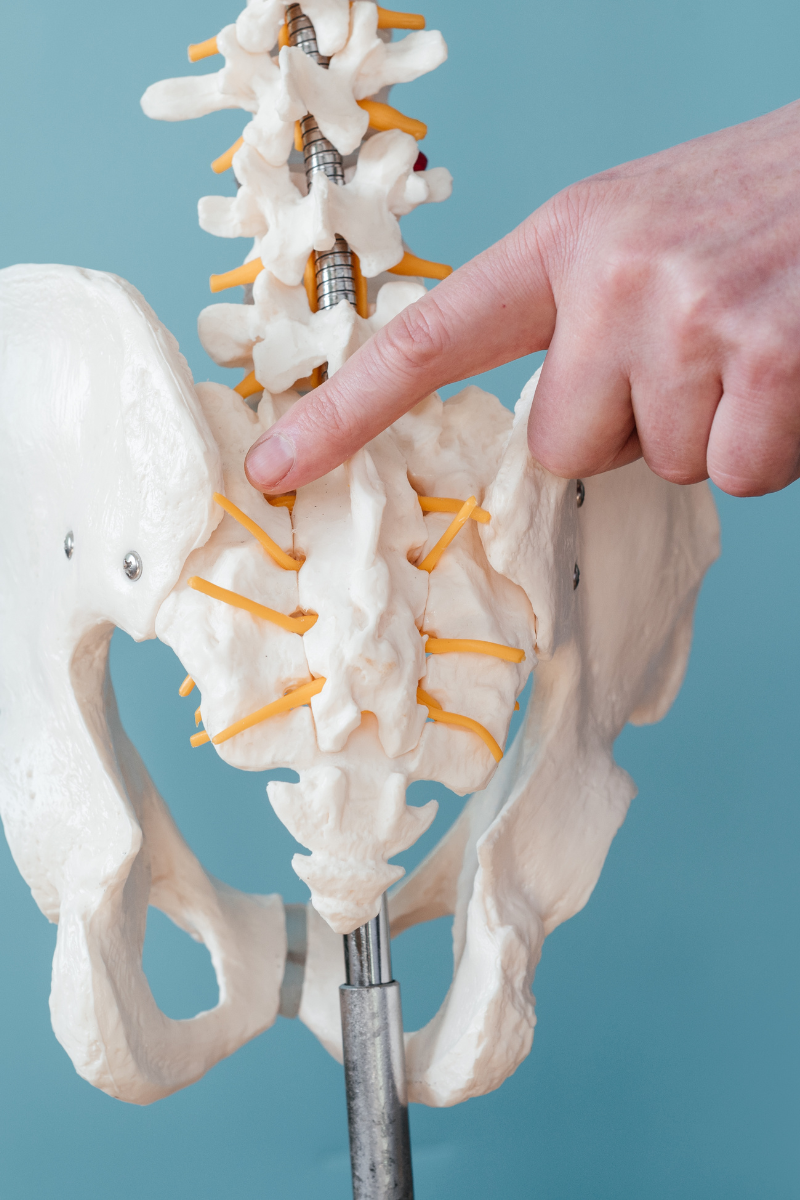
Lower back pain can be debilitating and can affect individuals from all walks of life, including (but not limited to) office workers, athletes, stay at home parents and those working in heavy industries. While there are multiple factors that can contribute to lower back pain, one often overlooked source of pain is the sacroiliac (SI) joint.
In this article, we'll delve into the sacroiliac joint and its relationship to lower back pain, shedding light on how understanding and addressing any dysfunction present at this joint can alleviate discomfort and improve quality of life.
Understanding the Sacroiliac Joint
The sacroiliac joint (SIJ) is found between the triangular bone at the base of the spine, known as the sacrum, and the ilium, which is part of the pelvis. This joint connects the spine to the pelvis and plays a crucial role in supporting and transmitting forces between the upper body and the lower extremities. It also provides stability while single limb weight bearing and allows for limited movement, primarily in the form of subtle rotations and tilting.
The Impact of Sacroiliac Joint Dysfunction on Lower Back Pain
When the sacroiliac joint becomes dysfunctional or experiences imbalances of muscular tension and weakness, it can contribute to lower back pain.
Here's how sacroiliac joint dysfunction affects lower back pain:
Addressing Sacroiliac Joint Dysfunction to Relieve Lower Back Pain:
To alleviate lower back pain associated with sacroiliac joint dysfunction, a comprehensive approach that focuses on restoring joint function, releasing and strengthening surrounding muscles, and restoring optimal movement patterns is crucial. A management plan will consider the following strategies:
1. SIJ Stabilization Exercises:
Engage in specific exercises that target the muscles supporting the sacroiliac joint, such as bridges, clamshells, bird dogs and dead bugs. These exercises can enhance stability, improve joint function, and alleviate lower back pain when done with the correct technique.
2. Manual Therapy:
Seeking the expertise of a healthcare professional, such as a physiotherapist can be beneficial. They can provide manual therapy techniques, such as joint mobilisation or manipulation, to restore proper alignment and function of the sacroiliac joint and lumbar spine.
3. Postural Awareness and Ergonomics:
Pay attention to your posture, both during daily activities and while sitting at your desk. Ensure that your workstation is ergonomically optimised to support proper posture, including using a supportive chair and maintaining a neutral spinal alignment. If you are someone whose occupation involves hazardous manual handling such as repeated lifting then making sure your technique is optimal will effectively help to prevent lower back injuries.
4. Activity Modification and Rest:
If certain activities or movements exacerbate your lower back pain, consider modifying or avoiding them temporarily. Rest periods and gentle stretching can also help alleviate symptoms and allow for healing.
The best solution is to see us for a physiotherapy assessment so that we can conduct a thorough evaluation, provide personalised advice, and administer targeted treatments to address joint dysfunction and alleviate your lower back pain effectively. We are always more than happy to help so don’t feel you have to put up with your annoying pain any longer.